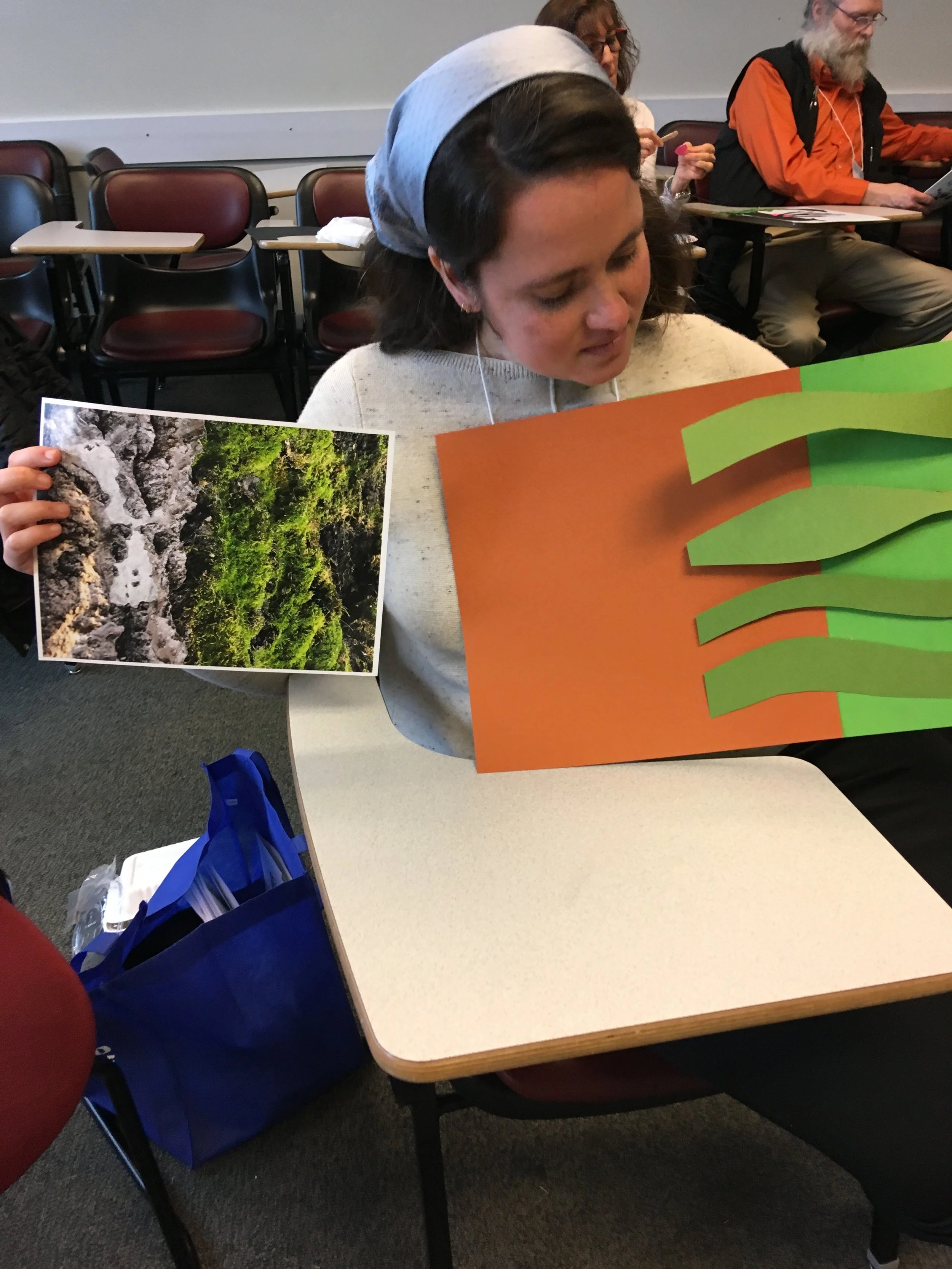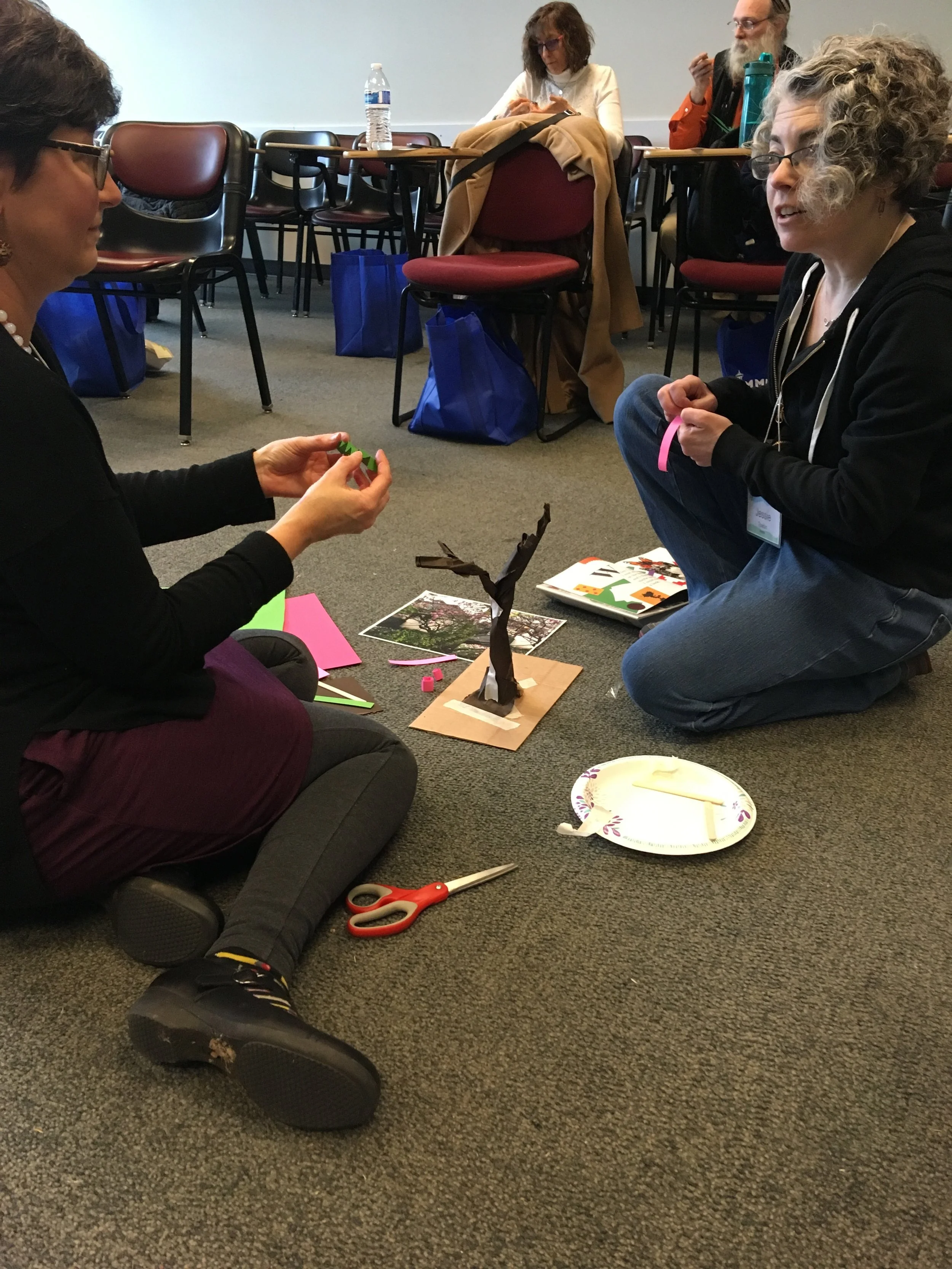Tu B'Shvat begins a new arc of the year, which leads us back to the beginning, to Rosh Hashanah, the New Year for the world (as celebrated in Judaism). By learning more about the tree-ness, and the celebration of the New Year for trees that is at the center of our Tu B'Shavt observance, we can place ourselves more fully at this juncture in the year and move forward from there in a meaningful way.
How do we celebrate tree-ness, and what is the significance of doing so? The parable in Gemara Ta'anit tells of a person considering what blessing to give to a tree, a blessing that would truly be of benefit to the tree. The person takes time to consider what nice qualities the tree already has, and therefore which blessings would be redundant. Considered and rejected options: Sweet fruit? Pleasant shade? A stream of fresh water nearby? These things the tree already has. Finally the person settles on a blessing that all saplings grown from this tree should be like the tree. In essence, the person is saying, in order to be able to truly bless you, I had to really be present to what you're all about, who you really are and what gifts and blessings you already have. And when I found that you are essentially perfectly yourself, with no need of any improvement, I know I should bless you that your saplings be like you. Really, the true blessing, and the true relationship upon which the blessing is based, arises from the time and care and attention taken to see the other, to truly take them in, with no preconceived notions or requirements.
In the workshop, we tried to do that for the trees by choosing one tree from a selection of photographs of Berkeley and Seattle trees, and creating that tree in paper form, and then reflecting on what we perceived or noticed through that act of seeing through making.
We’re so like trees in some ways and so different in other ways. Through verses in the Torah we see how much we aspire to be like trees and are also called to be stewards of the trees who are in some sense defenseless against humans. Trees have their own umwelt, (a term coined by Jakob von Uexküll, which I learned through the amazing book The View from the Oak), their own unique context through which they experience the world By showing up as guests at the trees’ party, we exercise our ability to be present to those who are both so like ourselves and also so other (whether trees, humans, or anything else) in a way that celebrates connection and true distinctions as the same time.
And then by decentralizing ourselves as humans at the New Year for the trees, we are better positioned to progress more meaningfully towards the increasing particularity - as humans and as a Jewish people - of Purim, and Passover, and Shavuot, and Tisha B’Av and eventually towards the next arc of the year at Rosh Hashanah.
This workshop, and Tu B’shvat itself, coincided with MLK day this year. While I didn't make the explicit connection to MLK day (I’m always hoping people will arrive at these and other connections organically, but should probably be more direct about it) I think there’s a lot here regarding the humility, patience, and attention required to be a diverse healthy community, where our experiences, even our umwelts are often overlapping but also have areas that are quite distinct.





